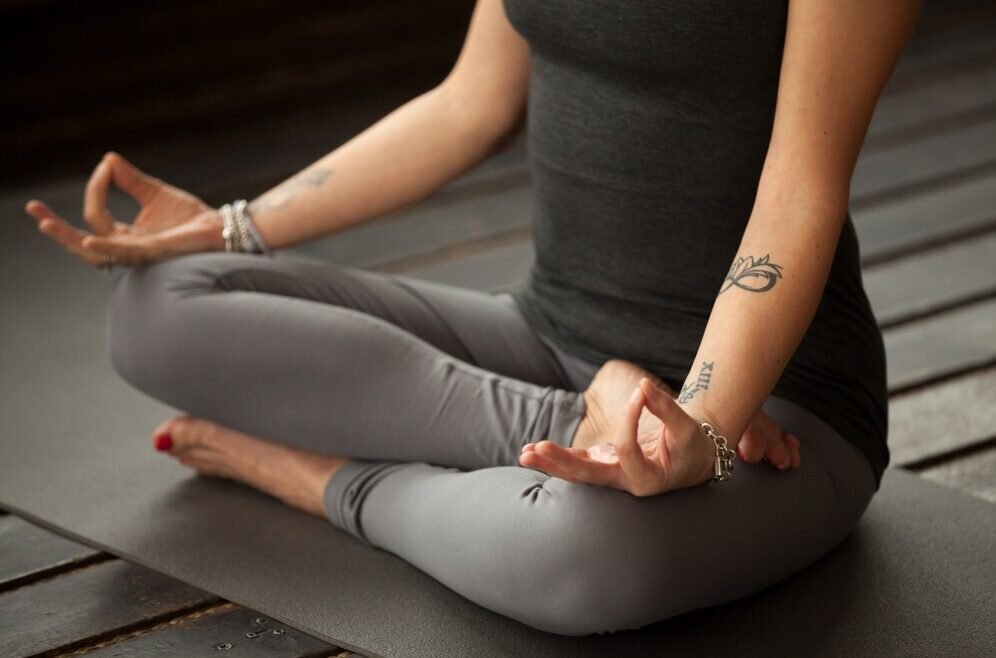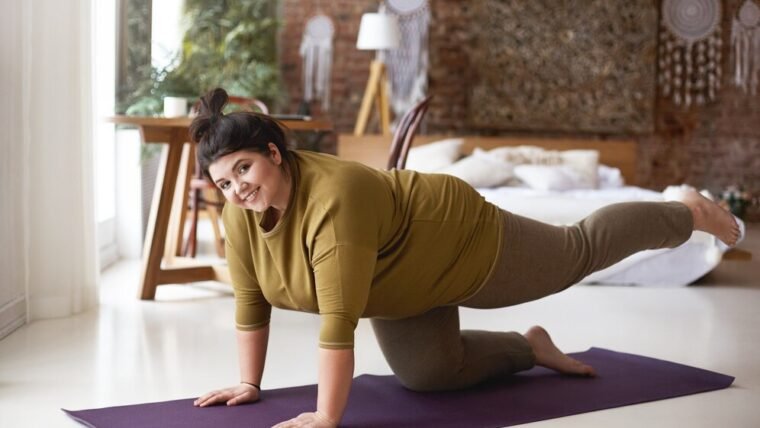Yoga and Breathing: How Pranayama Techniques Can Improve Your Well-Being
In today’s fast-paced world, finding moments of tranquility and balance can seem like an elusive dream. However, the ancient practice of yoga, with its profound emphasis on breath control through Pranayama techniques, offers a remarkable pathway to enhancing your overall well-being. This article explores the transformative power of Pranayama, revealing how its active and deliberate approach to breathing can revolutionize your physical, mental, and emotional health. Through a journey into the art of conscious breathing, you will discover how Pranayama can be your key to a more harmonious and vibrant life.

What is Pranayama?
Pranayama, a term rooted in the ancient Sanskrit language, is a practice that revolves around mastering the art of breath control. This practice encompasses a diverse range of techniques, among them breath lengthening, breath holding, and alternate nostril breathing. Let’s delve deeper into the significance of Pranayama and its profound effects on the intricate interplay between breath, mind, and body.
The Breath-Mind-Body Connection
The breath, a seemingly ordinary act, plays an extraordinary role in connecting your mental and physical realms. It serves as the bridge between your thoughts and your body’s responses. When stress or anxiety strikes, your breathing often takes on a shallow and rapid pattern. This, in turn, can trigger a cascade of issues impacting both your physical and mental well-being.
Consequences of Imbalanced Breathing
The repercussions of irregular or shallow breathing are far-reaching. They encompass heightened blood pressure, an increased risk of heart disease, and the onset or exacerbation of anxiety disorders. The imbalance in your breath is the ignition point for these health concerns. However, the practice of Pranayama offers a transformative means of restoring equilibrium, promoting not just breath control but overall harmony and health. In the following sections, we will unravel the extensive benefits that Pranayama can offer, empowering you to take control of your breath and enhance your quality of life.
Benefits of Pranayama
Pranayama, often referred to as the art of breath control, ushers in a treasure trove of health benefits, including:
- Stress and Anxiety Reduction
Pranayama practices wield a remarkable ability to diminish stress and anxiety, granting you a serene state of mind.
- Enhanced Cardiovascular Health
Engaging in Pranayama paves the way for improvements in your cardiovascular well-being, potentially diminishing the likelihood of heart-related ailments.
- Increased Lung Function
Through purposeful breath control, Pranayama techniques act as a boon to bolster lung function, ensuring your respiratory system operates optimally.
- Elevated Energy Levels
By fine-tuning your breathing patterns, Pranayama injects your body with augmented energy, leaving you feeling revitalized.

- Sharpened Focus and Concentration
Practicing Pranayama cultivates heightened focus and concentration, empowering you to remain fully engaged and alert in your daily life.
- Improved Sleep Quality
Numerous individuals attest that Pranayama contributes to enhanced sleep quality, enabling them to savor more restful and rejuvenating nights.
- Enhanced Digestion
Pranayama’s positive influence extends to your digestive system, potentially resulting in improved digestion and overall gut health.
- Reduced Pain and Inflammation
Pranayama techniques may play a pivotal role in alleviating pain and inflammation, offering relief from discomfort, and fostering an overall sense of well-being.
As we venture deeper into this article, we will explore these benefits in greater detail, revealing the remarkable transformative potential of Pranayama for your health and overall quality of life.
How to Practice Pranayama?
Pranayama, the age-old discipline of breath control, offers an array of techniques, each possessing distinct advantages. Here, we explore some of the most popular Pranayama techniques and delve into their unique benefits:
- Nadi Shodhana (Alternate Nostril Breathing)
Nadi Shodhana involves the gentle closing of one nostril at a time, allowing deep inhalation and exhalation through the other nostril. This technique serves as a bridge, harmonizing the left and right hemispheres of the brain, resulting in a profound sense of equilibrium and relaxation. It can help you find mental clarity, balance emotional states, and reduce stress.
- Kapalabhati (Skull breath)
Kapalabhati is a dynamic practice that entails rapid exhalation through the nose with force, while inhalation occurs naturally. This vigorous technique promotes detoxification of the body and stimulates improved circulation. It can leave you feeling invigorated and refreshed, making it an excellent choice for increasing vitality and mental alertness.
- Bhramari (Bee Breath)
The Bhramari technique, named after the humming sound produced, involves inhaling and exhaling through the nose while emitting a soothing bee-like hum. This practice has a calming effect on the mind, reducing stress levels and promoting mental tranquility. Bhramari can be a valuable tool for managing anxiety, enhancing concentration, and cultivating a sense of inner peace.
As you embark on your journey into Pranayama, consider these techniques as valuable tools for enhancing your well-being. Each technique offers its own unique advantages, so you can choose the one that aligns best with your goals and preferences. Remember, consistency and patience are key to mastering Pranayama and reaping its full benefits. By incorporating these techniques into your routine, you can tap into a world of improved health and inner balance.

Starting Your Pranayama Journey
If you’re just stepping into the realm of Pranayama, it’s wise to kick off your exploration with a simple technique, like Nadi Shodhana. This approachable method can serve as a gentle introduction to the world of breath control, allowing you to acclimate gradually.
- Accessing Resources
In today’s digital age, you’re in luck—there’s a wealth of resources at your fingertips. You can easily find Pranayama tutorials online, which provide step-by-step guidance and demonstrations. Additionally, many yoga classes, whether in-person or virtual, offer expert instructors who can personally guide you through the techniques.
- Detailed Exploration
In the upcoming sections of this article, we will delve into these Pranayama techniques with greater detail and clarity. This exploration will equip you with a deeper understanding of the practices, ensuring you have the knowledge and tools necessary to embark confidently on your Pranayama journey.
Embrace this journey with an open mind and patience, for the practice of Pranayama can lead to a transformative enhancement of your overall well-being, and every step you take brings you closer to that goal.
Tips for Practicing Pranayama
As you embark on your journey of Pranayama, these practical tips will guide you towards a successful and rewarding practice:
- Create a Tranquil Space: Begin by finding a serene and comfortable place where you can immerse yourself fully in the practice. A quiet environment free from distractions allows you to focus on your breath and inner self.
- Sit Comfortably and Upright: Assume a relaxed yet upright seated posture. Keep your spine straight to facilitate optimal breath flow. Your physical alignment is a cornerstone for effective Pranayama.
- Embrace relaxation: Close your eyes and intentionally release the tension from your body. Allow your muscles to relax and your mind to enter a state of tranquility. Relaxation is the gateway to a deep and fulfilling practice.
- Tune into Your Breath: Direct your attention to your breath. Observe the natural rhythm of your inhalation and exhalation. This mindful awareness connects you to the core of Pranayama, your breath itself.
- Gradual Progress: Start your Pranayama journey with a modest duration, even just a few minutes. As you grow more comfortable and familiar with the practice, incrementally extend the duration. This gradual approach ensures a sustainable and effective journey.
- Cultivate Patience and Consistency: It’s important to understand that mastering Pranayama is a gradual process. Be patient with yourself and remain consistent in your practice. Over time, your efforts will yield significant benefits for your well-being and quality of life.
These tips serve as a foundation for a fulfilling and enriching Pranayama practice. By incorporating them into your routine, you can enhance your connection to your breath and experience the profound benefits of this ancient discipline.
How Pranayama Techniques Can Improve Your Well-Being
Enhancing Your Yoga Practice with Pranayama
Pranayama isn’t limited to standalone practice; it seamlessly integrates with your yoga routine to amplify its benefits. Whether you’re a seasoned yogi or a novice, incorporating Pranayama into your yoga sessions can yield remarkable results. Here’s how you can seamlessly fuse the two disciplines:
- Pre-Practice or Post-Practice Integration: If you’re engaged in a yoga session, consider dedicating a few minutes to Pranayama either at the beginning or end of your practice. This helps set the tone for your session or allows for a soothing transition to conclude your yoga practice.
- Incorporating Pranayama Between Poses: During your yoga practice, especially between poses, Pranayama can act as a bridge connecting your physical postures and your breath. This enhances mindfulness and deepens your practice.
- Pranayama during Longer Holds: When you find yourself in prolonged yoga poses, this presents an excellent opportunity to engage in Pranayama. It enhances your focus, inner calm, and breath control.
A Simple Pranayama Practice for Yoga Integration
Here’s a straightforward Pranayama technique that seamlessly blends with your yoga practice:
- Seated Comfortably with a Straight Spine: Begin in a comfortable seated position with your spine held straight, ensuring unobstructed breath flow.
- Eyes Closed, Body Relaxed: Close your eyes and let go of any tension in your body. This fosters a deeper connection with your breath and inner self.
- Hand Placement: Place your right hand over your heart and your left hand on your stomach.
- Inhalation and Exhalation: Inhale slowly and deeply through your nose, focusing on the expansion of your stomach. As you exhale, release the breath slowly and completely through your mouth, feeling your stomach contract.
- Sustained Practice: Continue this rhythmic breathing pattern for 5-10 minutes, immersing yourself in the soothing rhythm of your breath.
As you grow more at ease with this foundational Pranayama technique, you can begin to explore other methods such as Nadi Shodhana, Kapalabhati, and Bhramari, each offering its unique advantages. Additionally, a plethora of online resources and yoga classes are available to further enhance your understanding and mastery of these techniques, opening doors to a profound enhancement of your overall well-being.
Conclusion
Pranayama is a powerful tool that can help improve your overall well-being. By practicing pranayama regularly, you can reduce stress, improve cardiovascular health, boost energy levels, and promote relaxation.
If you are new to pranayama, start with a simple technique and gradually increase the duration of your practice as you become more comfortable. Be patient and consistent with your practice, and you will soon begin to experience the many benefits of pranayama.
BY SWAMI SRI RAM
Ancient Himalayan Lineage of Yogis



